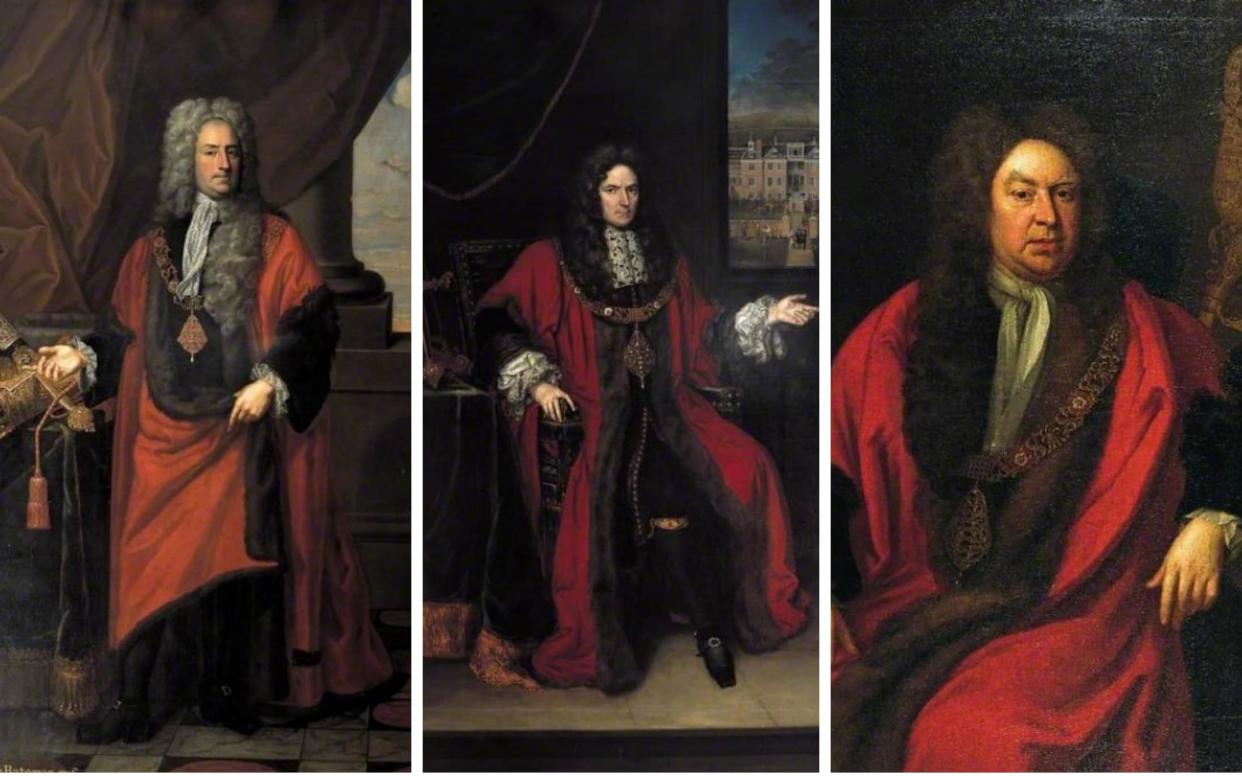Bank of England defies government guidance to remove portraits of former governors

The Bank of England has defied government guidance to “retain and explain” historic objects by quietly removing the portraits of former governors and directors from public view, The Telegraph can reveal.
Ten pieces of artwork – eight oil paintings and two portrait busts – were recently transferred to a private space following a review into former Bank leaders’ links to the slave trade, announced during last summer’s Black Lives Matter protests.
The move has led campaigners to accuse the Bank of undertaking a “latter-day Bonfire of the Vanities”, while the Department for Culture made clear that it does not support the decision.
Seven figures have been censured in total, the majority of whom are former Members of Parliament. They include Sir Gilbert Heathcote, a founding member of the Bank of England, and Sir Robert Clayton, who once lent King William III £30,000 to cover military costs and presided over the rebuilding of St Thomas’ hospital.
The other figures are Sir James Bateman, a former Lord Mayor of London, William Manning, who served in parliament for almost 30 years, John Pearse, a former MP for Devizes, Robert Bristow, who was a royal Clerk of the Green Cloth, and William Dawsonne.
The Bank’s decision to push ahead with the portrait removals has boosted calls for the Government to strengthen the legal authority of its “retain and explain” guidance. Robert Poll, the founder of the Save Our Statues campaign, noted that “the guidance around ‘retain’ is rather loose, while there is nothing at all about ‘explain’.”
He added: “The Bank should not be spending its time pointlessly sitting in judgment of the past, or be party to the current vogue for reducing history through the single lens of slavery. Sensible people understand that history is more complex and that people operated within a different legal and moral framework.
“Governor Andrew Bailey’s latter-day Bonfire of the Vanities – purging our art collections of anything deemed immoral – would surely make even Savonarola blush.”
The Bank has also appointed a researcher to explore the institution’s historic links with the transatlantic slave trade in detail. The work is expected to inform future museum displays interpreting the connections.
It comes after the Bank promised to improve its diversity and “actively engage” with black and ethnic minority colleagues following last summer’s race protests.
Andrew Bailey, the current governor, later said that while he did not “want to lose the standing of the Bank of England”, it was important to acknowledge the unsavoury elements of its past, including “some of the pictures of my predecessors that sit on the floor above me, whose past is being subject to more scrutiny”.
While it is unclear whether there will be further portrait removals, there are notable exceptions from the list of those censured, such as former governors Alfred Latham, who owned 402 slaves, and Benjamin Buck Greene, who inherited a slave fortune. According to a database compiled by University College London, there are at least 25 former governors and directors with similar links.
A spokesperson for the Bank of England said: “In June 2020, the Bank announced a review of its collection of images of former governors and directors, to ensure none with known involvement of the slave trade remain on display anywhere in the Bank. That review is now complete and the artworks have been removed from display.”
A spokesperson for the Department of Culture said: “The Government does not support the removal of historic objects. The Culture Secretary has been clear that, whilst it is always legitimate to examine Britain’s history, we should ‘retain and explain’ our heritage so that more people can engage in our shared past.”

